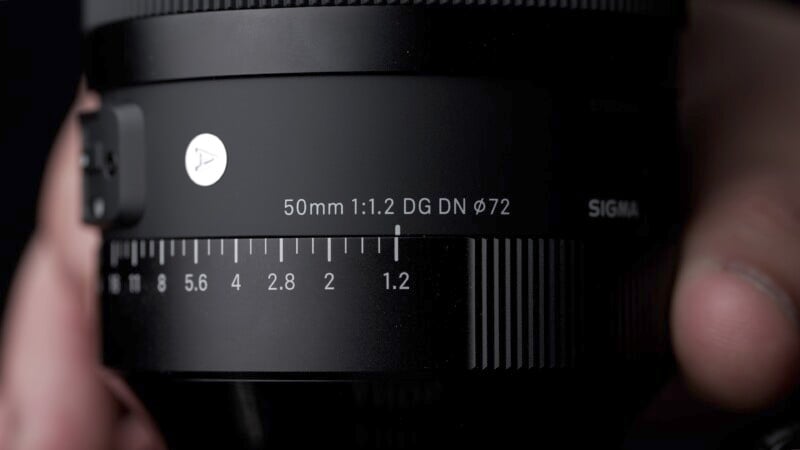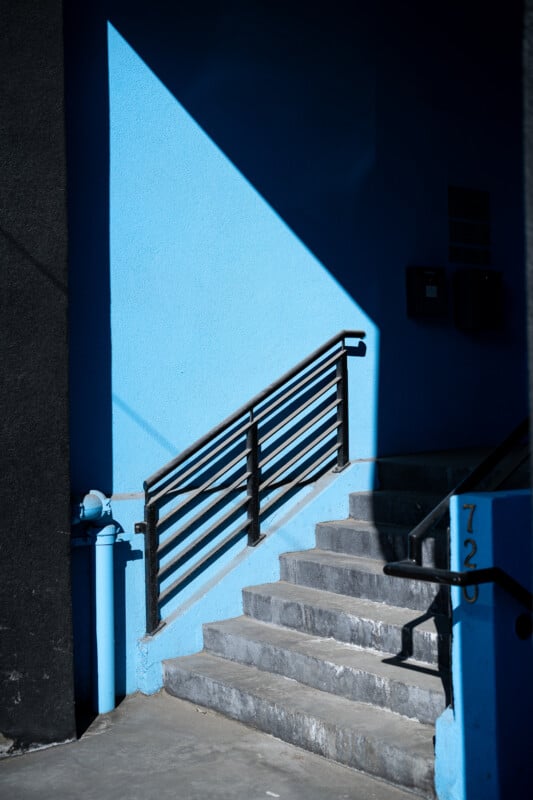I normally dismiss ultra-fast aperture lenses because they tend to be overly large, overly expensive, and overly excessive. I rarely want to have the shallowest depth of field possible, and an f/1.2 lens is only two-thirds of a stop brighter than a reasonably priced f/1.4 lens. But what if I can have my cake and eat it too?
What if there was an f/1.2 lens that was priced like an f/1.4 lens that also had no compromises to optical quality? That sounds like it would be too good to be true, right? Well, the Sigma 50mm f/1.2 Art disagrees and even though I was getting early access to a preproduction version of the lens, I was still impressed greatly.
Sigma 50mm f/1.2 Art: Design and Build Quality
The new Sigma 50mm f/1.2 Art will be available in both L-mount and Sony E-mount, both of which offer some competitive alternatives. The Sigma Art 50mm f/1.2 impresses right from the start with a fairly compact and lightweight design that manages to shave 40 grams when compared to the far more expensive Sony G Master 50mm f/1.2. Weighing in at only 26 ounces (745 grams) and with a 72mm filter thread diameter, the 50mm f/1.2 Art is easy enough to carry all day long.


Like all Art series lenses, the 50mm is well built with Sigma’s now characteristic all-black livery and is fully weather-sealed too. The 50mm comes with a nice button-locking hood and an aperture ring which can be made to click or turn smoothly. There is a custom button and a switch for manual focus control. Twin linear autofocusing motors make quick work of any focusing tasks, and I’m confident the lens will be fast enough for journalism and street photography.


Sigma ART 50mm f/1.2: The Image
Like most Sigma lenses, the 50mm f/1.2 Art is resistant to flare and ghosting — I only noticed a little bit of a green-gold tinge. Contrast is also well-maintained. The lens does seem to have some chromatic aberration, which is easy to fix in post, and slight longitudinal chromatic aberration (LoCA), which is not but the levels here are manageable.
I expected worse performance from the lens shooting wide-open at f/1.2 but the results are excellent. Sharpness is clear and consistent even at f/1.2 and the corners even have good detail at the widest aperture. Stopping down slightly further enhances the already excellent sharpness inherent in this lens.


An ultra-fast 50mm can certainly deliver shallow backgrounds and Sigma has pushed a first for its company by adding a 13-bladed aperture into this lens. Even stopped down, the blades create an almost perfect circle and specular highlights are round from f/2.5 onward.
Bokeh wide-open has a distinct and beautiful cat’s eye effect that compliments central subjects. There are no onion rings or hard borders to specular highlights which translates into some of the smoothest, nicest-looking bokeh I have ever seen on a lens. The Sigma 50mm f/1.2 is also very good at rendering the transitions from in-focus to out-of-focus areas, so if you like the look of shallow depth-of-field images, this is your lens.


Sigma has made some effort to reduce lens breathing in the 50mm f/1.2 and the results do show that, as there is only minor breathing when focusing from near to far. The 50mm is not a macro lens by any stretch, giving only a 1:6.2 lifesize reproduction ratio. However, the lens has been corrected for close-range focusing so the results at minimum distance are sharp.


Sigma ART 50mm f/1.2: The Value
I had a truly enjoyable experience using the Sigma Art 50mm f/1.2 and it softened my typical disdain for ultra-bright lenses as extravagant excess. The wide aperture isn’t just for show because the lens is sharp, smooth, and well-controlled at its widest aperture. What a fast lens is supposed to do well, the Sigma does beautifully. At $1,400, the Sigma Art 50mm f/1.2 is priced very competitively.

In L-mount, the Sigma is well below the Panasonic 50mm f/1.4 in price and performs better in pretty much every way. In Sony E-mount, Sigma’s 50mm f/1.2 Art is roughly the same price as the Sony 50mm f/1.4 and substantially more affordable than the G-Master 50mm f/1.2. Although the Sony lenses are optically excellent as well, this offering from Sigma is either faster or cheaper and would be my choice out of all the options available.
Sigma told us recently that it wanted to be seen as a master of optics. I think this lens is yet another example that it has achieved that goal yet still maintains its effort to keep prices affordable for every photographer’s budget.
Update 3/26: Updated filter diameter size. We apologize for the error.
